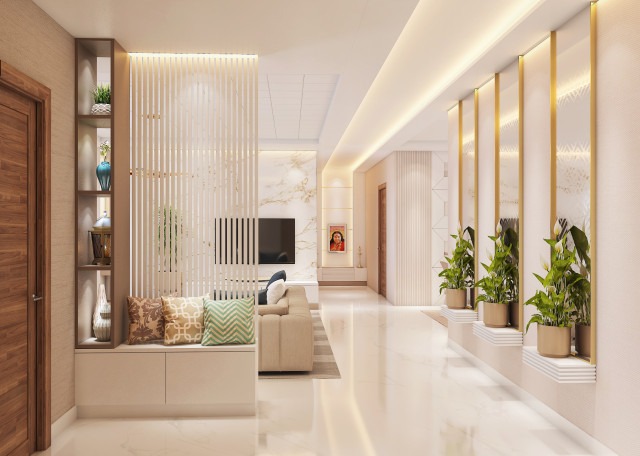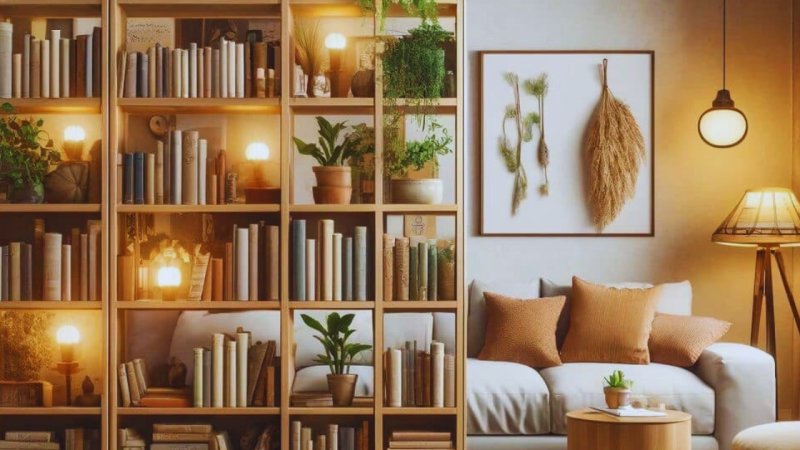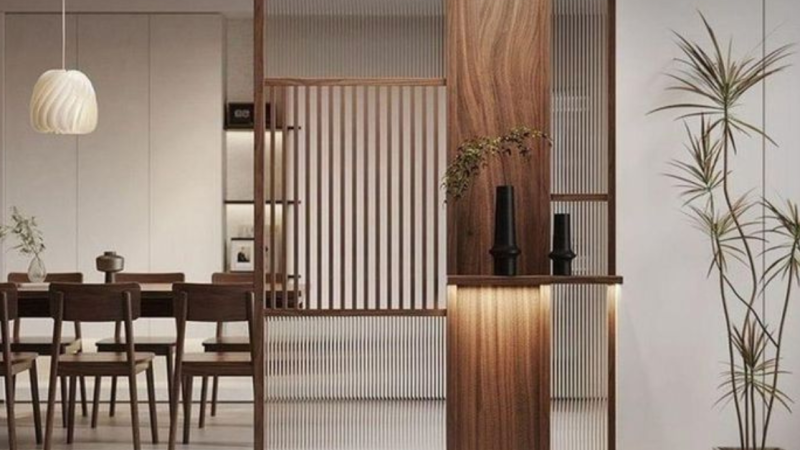How to Use Partitions to Create Privacy Without Blocking Space

In modern living spaces, achieving privacy without compromising openness is a common design challenge. Partitions offer an effective solution, allowing you to delineate areas without constructing permanent walls. This approach maintains the flow of natural light and air, ensuring spaces feel open yet private.
1. Open Shelving Units
Utilizing open shelving as a room divider serves dual purposes: it divides the space while providing storage. These units allow light to pass through, maintaining an open feel. By displaying books, plants, or decorative items, you can create a personalized and functional divider. This method is particularly useful in studio apartments or open-plan living areas.
2. Sliding Glass Doors
Sliding glass doors or panels can section off areas without obstructing light. Frosted or textured glass adds privacy while still allowing light diffusion. This option is ideal for creating quiet zones or home offices within larger rooms. The transparency of glass maintains a visual connection between spaces, preventing a boxed-in feeling.
3. Curtains and Fabric Panels
Curtains offer a flexible and affordable way to partition spaces. They can be drawn open to unify the area or closed to provide privacy. Sheer fabrics allow light to filter through, preserving brightness while adding a layer of separation. This solution is easy to install and can be changed to update the room’s look.
4. Wooden Slat Partitions
Vertical or horizontal wooden slats create a sense of division without completely closing off a space. The gaps between slats permit airflow and light passage, maintaining an open atmosphere. This design adds a modern and natural aesthetic, suitable for various interior styles. It’s an excellent way to define areas like dining spaces or reading nooks.
5. Plant Dividers
Arranging tall plants or a series of planters can serve as a natural partition. This method introduces greenery into your space, enhancing air quality and aesthetics. Plants like tall ferns or bamboo are effective choices. This living divider adds a refreshing element and can be rearranged as needed.
6. Folding Screens
Portable and versatile, folding screens can be set up to provide immediate privacy and folded away when not in use. They come in various designs and materials, allowing you to choose one that complements your decor. Folding screens are perfect for temporary separation, such as creating a guest area or a private workspace.
7. Bookshelf Dividers
A strategically placed bookshelf can act as a partition, offering storage and separation simultaneously. Opt for open-back designs to allow light flow, or closed-back for more privacy. This approach is functional and adds character to your space, making it feel cozy and organized.
8. Rope or String Partitions
Creative use of ropes or strings can form an artistic partition. By suspending them from the ceiling in a pattern, you create a visual divider that doesn’t block light or air. This DIY approach adds a unique and customizable element to your interior design. It’s an excellent way to add texture and interest to a room.
9. Partial Walls
Constructing a half or partial wall can define spaces while keeping them connected. This method provides some privacy and separation without the full commitment of a floor-to-ceiling wall. Partial walls are great for separating dining areas from living rooms or creating an entryway.
10. Hanging Room Dividers
Suspended panels or beads can serve as decorative partitions. They add a whimsical touch and can be easily installed or removed. This option is ideal for renters or those seeking a non-permanent solution. Hanging dividers can also add color and movement to a space, enhancing its visual appeal.
Incorporating partitions into your home allows you to create private areas without sacrificing the sense of openness. By selecting the appropriate type of divider, you can enhance both functionality and aesthetics, tailoring your space to meet your needs.


